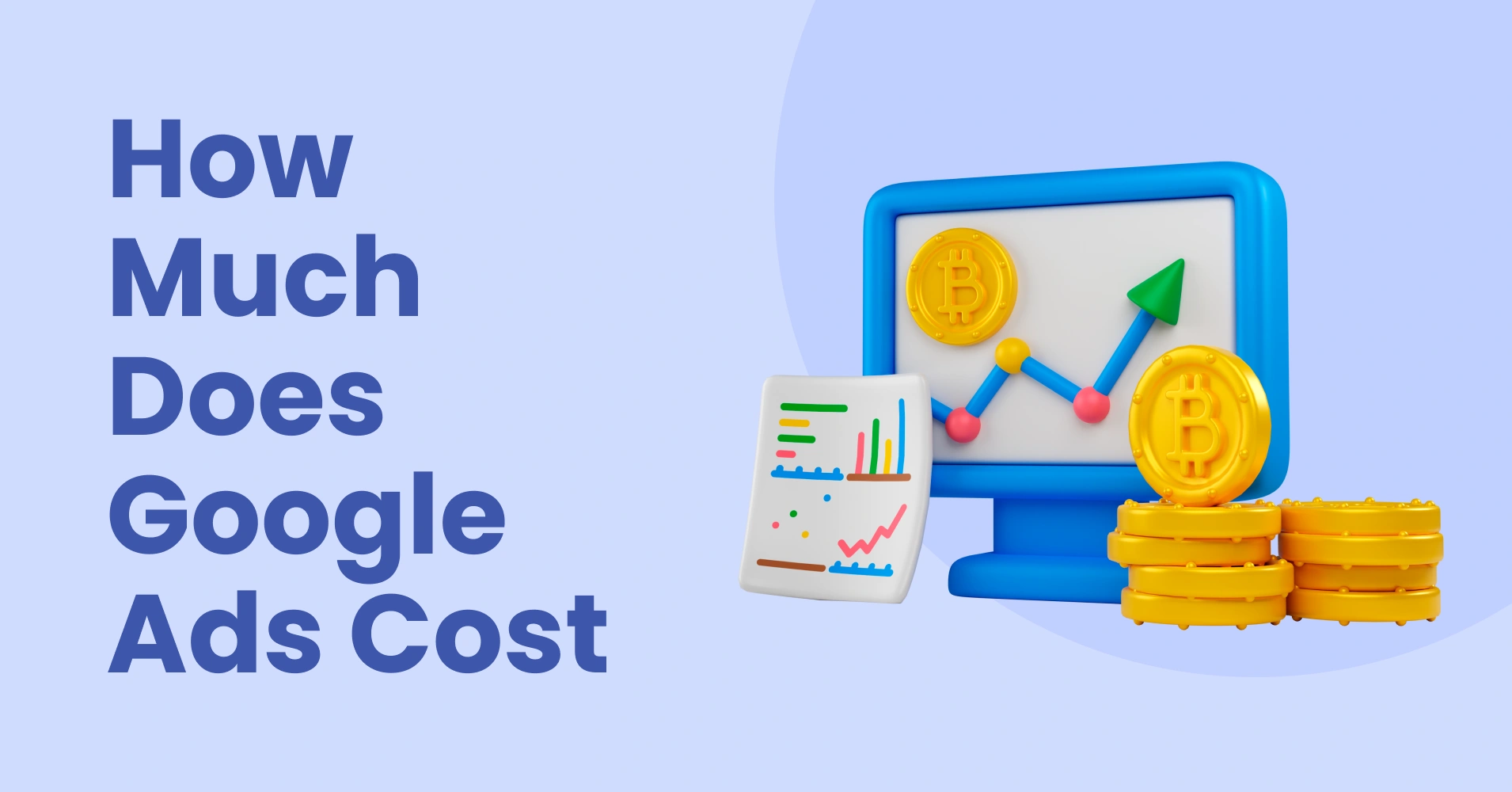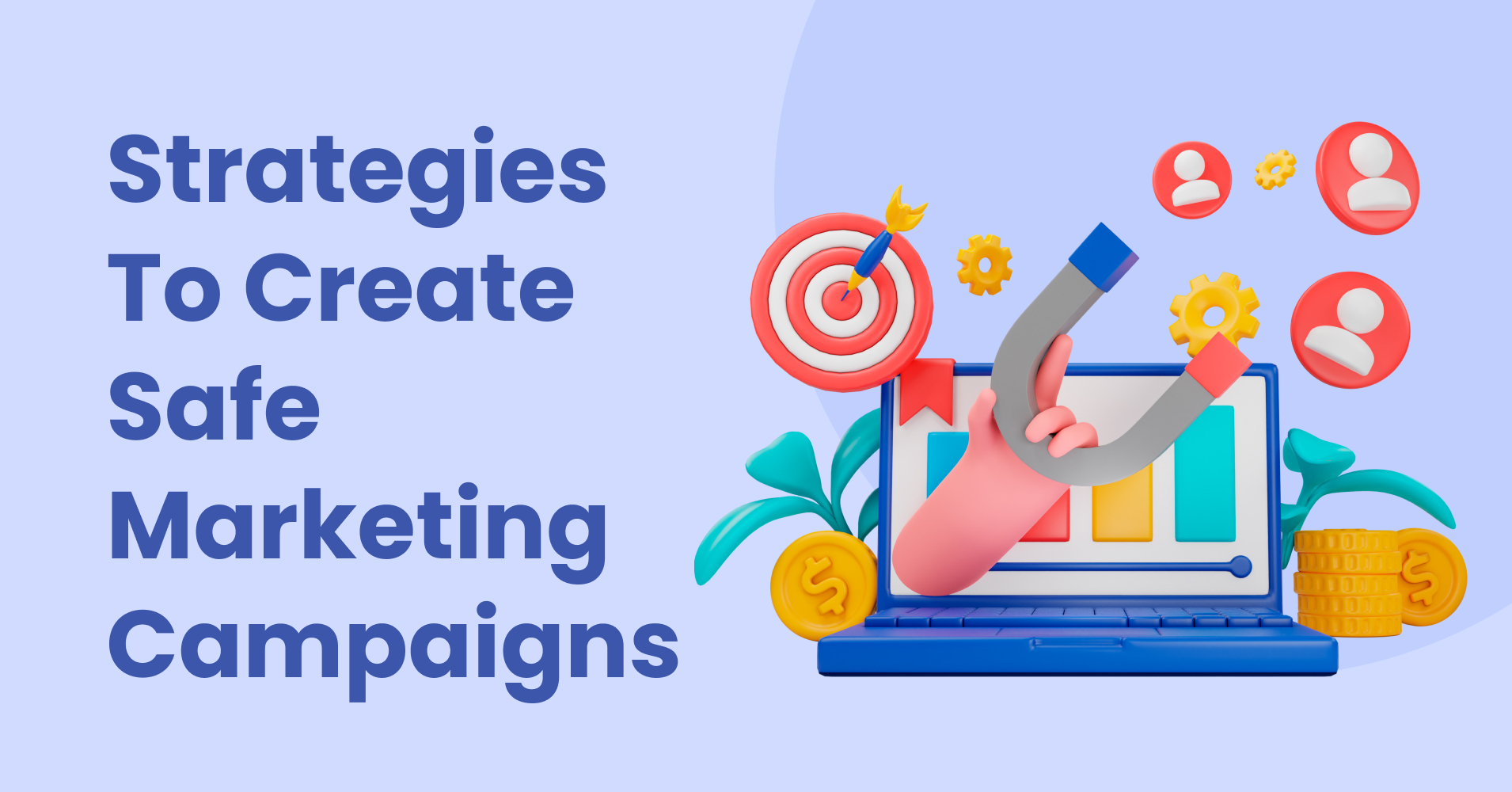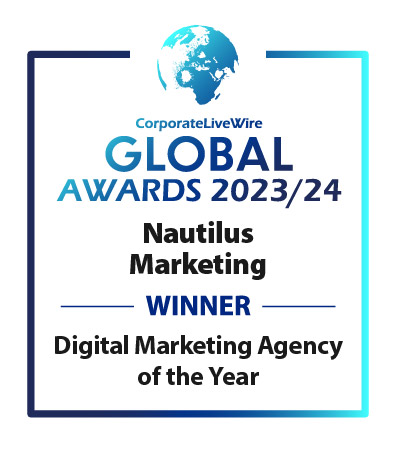Google Ads Cost: A Comprehensive Guide to PPC Costs
Google Ads has become an indispensable tool for businesses looking to expand their online presence and reach potential customers. Pay-Per-Click (PPC) advertising is a powerful way to target your audience and drive traffic to your website. However, one of the most common questions business owners and marketers have is, “How much does Google Ads cost in 2024?” In this comprehensive guide, we will explore the factors that influence PPC cost and provide insights into the latest Google Ads cost trends for 2024.
Understanding the cost of Google Ads in 2024 requires diving deep into the intricacies of PPC. This comprehensive guide aims to provide clarity on PPC costs, allowing businesses to better structure their advertising strategies. Firstly, the costs differ widely influenced by factors such as competitiveness, timing, location, and overall goal. Google Ads, one of the leading online advertising platforms, oscillate in cost from pennies to hundreds of dollars per click.
The cost structure is essentially PPC – Pay Per Click. As the name suggests, you pay each time someone clicks on your ad. But understanding this correctly is crucial, given that Google uses an auction system to determine your ad placement, where the highest bid doesn’t always win. Instead, it’s a combination of the bid and quality of the ad—better impact, better position.
Remember, the average PPC cost in 2024 can vary significantly across industries and regions. Managing your Google Ads cost effectively necessitates recognizing these variations and adjusting your strategy accordingly. It is vital not to overlook the costs and the overall cost-performance rate when planning your Google Ad campaigns.
The right approach to PPC management can make your Google Ads more effective, cut extraneous costs, and increase return on investment. So, decoding the nuances of Google Ads and understanding the dynamic PPC cost will put you on the pathway to success. To conclude, while the fluctuating rate may seem intimidating, equipped with the correct understanding, optimizing your ad strategies and managing the ensuing ad costs can be a manageable task.
Understanding Google Ads Cost
Google Ads is an auction-based advertising platform where advertisers bid on keywords relevant to their products or services. When a user enters a search query matching those keywords, Google displays ads from the highest bidders in a prominent position on the search results page. The cost of running Google Ads campaigns, also known as PPC cost, can vary significantly based on several factors.
As businesses worldwide increasingly turn to digital platforms for marketing, understanding the cost implications of these campaigns is vital for effective budgeting. An understanding of the Google ads cost therefore couldn’t be more important in 2024. Google Ads, as a top-tier online advertising platform, holds a significant place in many company’s advertising strategies. It’s therefore vital that businesses have a clear understanding of the cost, price, and the rate at which these costs can accumulate. The cost of Google Ads in 2024, compared to previous years, promises some interesting subtleties.
The Google Ads cost varies depending upon a range of factors. Several components make up the overall price you will pay for Google Ads. The fee associated with Google Ads depends largely on the type of ad you choose to run. In 2024, like any year, the price of Google Ads shows some variation. The rate of these costs fluctuates according to factors such as the type of ad, the location of the ad and the competition in the ad space. Therefore, the understanding of the Google Ads cost is vitally important in 2024.
Increases in ad costs for Google are expected as they follow trends in the general inflation rate. However, Google Ads is an investment, and returns can far surpass the original ad fee. Overall, the costs and rates associated with Google Ads in 2024 should be part of any business’s marketing strategy. Therefore, understanding Google Ads and their fee structure’s implications are key.
Factors Affecting PPC Cost
As an advertiser on Google Ads taking notes on Google Ads Costs, it’s crucial to identify the factors affecting your maximum CPC or cost-per-click. These factors could invariably influence your Google Ads costs, or ad costs, as well as how much you might opt to spend on your campaign. Understanding Google Ads and the costs involved is the first step to making an informed decision on your ad spend for 2024 and beyond.
Your maximum bid majorly influences the ad costs for Google Ads. This is the most you’re willing to spend for a click, and Google Ads uses your bid in conjunction with your Quality Score to determine your ad rank. This could immensely increase your costs or possibly decrease them. Determining your maximum bid is therefore an essential part of controlling your Google Ads cost.
Another impactful factor is your chosen keywords. Depending on their competitiveness and demand, they could increase your CPC. It’s also worth noting that the region and industry you’re targeting could affect your Google Ads costs as some areas and business sectors have higher competition, which could potentially increase your spend and CPC.
Finally, the success of your Google Ads campaigns and the costs involved will significantly depend on how well you manage your Google Ads. Regular monitoring and adjusting your bids, targeted keywords, and ad content can also help manage your costs effectively.
In conclusion, the factors affecting your Google Ads costs vary. Therefore, a comprehensive understanding of these factors is essential to manage your ad costs effectively and maximize your Google Ads performance in 2024.
- Keywords: Choosing keywords is a fundamental factor influencing your PPC cost. Highly competitive keywords with a higher search volume often have a higher cost per click (CPC) because more advertisers are bidding on them. Long-tail keywords, which are more specific and have lower competition, can be a cost-effective alternative.
- Ad Position: Your ad’s position on the search results page can impact PPC cost. Ads appearing in the top positions usually have a higher CPC, as they receive more clicks and generate more visibility. Achieving a top position typically requires a higher bid.
- Quality Score: Google uses a Quality Score to determine the relevance and quality of your ads and landing pages. A higher Quality Score can lead to a lower CPC, making your advertising more cost-effective. Improving ad quality and relevance is crucial to reducing PPC cost.
- Geographic Targeting: The location you target in your ad campaigns can affect the cost. Highly competitive markets and major cities tend to have higher CPCs compared to less competitive or smaller areas.
- Ad Schedule: The time and days you choose to run your ads can impact cost. Bidding during peak hours or days can result in higher CPCs. Ad scheduling allows you to control when your ads are displayed to optimize your budget.
- Competition in Your Industry: The competitiveness of your industry plays a significant role in determining your PPC costs. Highly competitive industries often have higher CPCs because numerous businesses are vying for the same audience.
- Device Targeting: The choice of devices, such as mobile, desktop, or tablet, can influence PPC cost. Mobile users may have different behaviours and expectations, leading to variations in CPCs.
Google Ads Cost Trends in 2024
To gain a better understanding of Google Ads cost in 2024, we can look at the trends and data available. It’s important to note that these trends are subject to change as the digital advertising landscape evolves. To get the most accurate and up-to-date information on PPC cost, you can refer to the latest data from Google or consult with a PPC agency like Nautilus Marketing.
- Increased Competition: As more businesses recognize the value of online advertising, competition for ad space on Google has intensified. This increase in competition can lead to higher CPCs, especially for popular industries and keywords.
- Evolving Ad Formats: Google is continuously introducing new ad formats and features, such as responsive search ads and video ads. These new options can impact cost, as advertisers adapt to the changing advertising landscape.
- Machine Learning and Automation: Google’s machine learning algorithms have become more sophisticated in optimizing ad performance. While this can improve ROI, it may also affect PPC cost, as the algorithms adjust bids dynamically to maximize results.
- Seasonal Variations: Some industries experience fluctuations in demand during specific times of the year. Advertisers should consider these seasonal trends and adjust their budgets accordingly to maintain cost-effectiveness.
- Local and Mobile Emphasis: Google has been focusing on local search and mobile user experience. Advertisers targeting local audiences or optimizing for mobile may experience fluctuations in PPC cost based on these user trends.
Maximizing ROI: Effectively Managing Your Daily Budget for Ads
Identifying the cost of Google Ads and their importance in a business’s advertising strategy can be a tricky endeavor. However, one effective solution is managing your daily budget for ads, a key strategy that directly influences the rate of success and quality of your Google ad services. By understanding the costs involved firsthand, you can better manage your spend and maximize the return on investment (ROI) your ads bring to your business. But just how do you do this? By making your Google ad spend work smarter, not harder.
Indeed, Google Ads cost isn’t simply about spend, but how that spend translates into quality leads. It sounds simple, yet, adequate Google Ads management requires careful planning and a keen eye for detail. This was covered in our previous section, “Strategies for Managing Google Advertising Cost”. It’s also about finding the harmony between what meets your budget and what drives results.
This management process is a continuous cycle. Once an ad strategy is put in place, it requires frequent revisiting and fine-tuning to maintain its effectiveness in a dynamic marketplace while ensuring it doesn’t exceed your daily budget. Remember, the cost of your Google Ads isn’t just about raw numbers; it’s about the value brought to your business. A well-managed Google Ads strategy can ensure your daily budget is efficiently used, costs stay within a manageable limit, and most importantly, your ads deliver maximum ROI.
Evidently, realizing quality returns from your Google Ads requires effective management and a clear vision of your business’s ad strategies. Without this solution, you may well find the costs spiraling, the quality of leads dropping, and the effectiveness of your ads diminishing. Always keep your eye on the goal: maximizing the ROI from every Google ad.
Is the Google Ads Cost Right for You? Understanding Ads Cost
Deciphering whether the cost of Google Ads is appropriate for your business can pose a challenging task. Understanding Google Ads cost in greater depth can assist in making a well-informed decision regarding your ad spend. The cost, intricately connected to factors such as maximum CPC (Cost Per Click) and the quality of ads, plays a pivotal role in determining the success of your Google Ads strategy. To know how much to spend on Google Ads, you must first comprehend the CPC bid, that is, the maximum amount that you are willing to pay for a click on your ad. A significant part of Google Ads cost involves managing the CPC bid and understanding the maximum bid that fits your budget.
The price of Google ads becomes more predictable when you truly understand how CPC interacts with your ad costs. The quality of your ads also influences your Google ads cost, with higher quality typically leading to lower costs and improved ad positions. Balancing the maximum CPC and striving for high-quality ads can often lower your ad costs. Each bid you make or max CPC you set for your Google ads, is directly proportional to your ad costs. In an attempt to control these ad costs, Google presents several bidding strategies designed to cater to distinct advertising goals and budget limitations. Therefore, comprehending your business’s unique needs can assist in selecting the best approach for your Google ads spend.
In conclusion, understanding these various factors central to Google Ads can be instrumental in maneuvering ad costs and ultimately optimizing your Google Ads strategy. Each component, from maximum bid and CPC bid to the quality of your ads, influences your Google ads cost to a considerable extent.
Google Advertising Cost Trends: Forecast for 2024
Predicting the cost trends of Google Advertising in 2024 is paramount for both agencies and businesses. Based on current analysis and prediction, one can surmise that Google Ads costs will witness a significant uptick in 2024. The escalating competition in the realm of SEO, coupled with the constant fluctuations in marketing strategies, contribute heavily to this forecast. Understanding Google Ad costs requires meticulous analysis and the adept use of analytics. Google’s analytics tools provide an extensive overview of areas where you might need to concentrate your search engine marketing efforts. Considering the cost trends for Google Ads in coming years, it becomes increasingly vital to effectively manage your business’s Google AdWords costs to maximize ROI. While the Google Ads cost might seem daunting, it is essential to consider its potential for your business.
A well-managed, well-analyzed Google Ads campaign has the potential to be a worthy investment. Predictive analysis shows that many businesses will spend more on Google Ads due to its potential return on investment. However, managing and understanding the ad costs can become overwhelming. Hence, many businesses turn to agencies specializing in Google Ads. These agencies leverage analytics to craft tailored strategies, optimizing their client’s visibility in Google’s search listings, thereby ensuring a higher ROI. To summarize, the rising trend in Google Advertising costs will likely continue into 2024, as the value these ads bring to businesses outweighs the costs. With strategic campaign management and using Google’s analytics tools, companies can effectively navigate the dynamic landscape of Google Ads costs.
Working with Nautilus Marketing
Nautilus Marketing is a leading PPC agency that specializes in helping businesses navigate the intricate world of Google Ads. With our expertise, you can gain a competitive edge in 2024’s digital advertising landscape. Our services are designed to provide you with the latest data, industry-specific advice, and tailored strategies to ensure your Google Ads campaigns deliver a strong return on investment.
To offer more in-depth insights into Google Ads cost in 2024, here are some specific tips and strategies you can employ to optimize your PPC campaigns:
Choosing The Right Digital Marketing Agency For You
When it comes to selecting the perfect digital marketing agency for your unique business needs, there are crucial steps to follow. Begin by clearly defining your project’s objectives, whether it’s a web redesign, branding overhaul, or something else. Ensure the agency has expertise in your industry and a track record of relevant work. Inquire about their creative process, project timelines, and pricing structure to align expectations. To truly assess if an agency is the right fit, a discovery call is indispensable. It’s a valuable opportunity to discuss your vision and objectives, allowing you to gauge if the agency aligns with your goals. If you’re on the lookout for a creative partner to bring your ideas to life, we invite you to book a discovery call with the nerds at Nautilus Marketing today. We’re enthusiastic about helping you elevate your brand and transform your vision into reality.
Tips for Managing Google Ads Costs
- Keyword Research: Thoroughly research and select the right keywords for your campaigns. Consider a mix of broad, exact match, and long-tail keywords to balance costs and reach.
- Quality Score Improvement: Invest time in improving your ad quality score. Make sure your landing pages are relevant, and your ad copy is engaging and specific to your keywords.
- Geo-Targeting: If you’re targeting a specific location, use geotargeting settings to narrow down your audience. This can help you save on unnecessary clicks from users outside your target area.
- Ad Scheduling: Analyse your ad performance by time and day and adjust your ad schedule accordingly. Focus your budget on the hours and days that generate the best results.
- Ad Extensions: Utilize ad extensions to provide more information to users and encourage clicks. Sitelink and callout extensions, for example, can help enhance the visibility of your ads.
- Conversion Tracking: Implement conversion tracking to measure the success of your campaigns. This allows you to allocate your budget to campaigns that are delivering the best results.
- Budget Monitoring: Continuously monitor your budget and adjust it based on the performance of your campaigns. Don’t set it and forget it; be prepared to make changes as needed.
Strategies for Maximizing ROI
Navigating the world of Google advertising can be complex. Understanding the nuances and intricacies of Google Adwords is crucial to ensure the effective management of your business’s ad spend. Google Adwords is designed to provide businesses with a solution to enhance their visibility online. Therefore, it plays a significant role in the overall business strategy.
However, the cost can be a deterrent to many. Determining the optimal cost for ad spend and managing that effectively is significant to the business. By implementing effective strategies, you can potentially decrease your overall Adwords costs. Noteworthy is the concept of CPC, or Cost Per Click. Understanding how to effectively manage your maximum CPC can help control your total costs.
Solution strategies should incorporate aspects such as determining your maximum bid, strategizing your ad spend, and managing various ads. It is always beneficial to understand which of your ads are contributing most to your business, thereby contributing to an effective strategy; after all, ads do form a backbone of Google advertising.
A well-tailored Google ad can drive more traffic to your site and potentially increase your conversion rate. However, it is crucial to manage your ads well to ensure the maximum return on your ad spend. Consider seeking professional services specializing in Google Adwords management to provide the best strategies in controlling your costs.
In conclusion, managing the Google ad process effectively does require a sound strategy. From setting up the maximum CPC to establishing the most effective bid, mastering these aspects will aid in the successful running of your business’ Google advertising ventures.
- Focus on High-Value Keywords: Identify keywords that drive the most valuable traffic, even if they have a higher CPC. These keywords are more likely to lead to conversions and a positive ROI.
- Remarketing: Implement a remarketing strategy to re-engage users who have previously visited your site. These users are more likely to convert, and remarketing can be a cost-effective way to bring them back.
- Ad Group Structure: Organize your ad groups with a clear and logical structure. This helps you create highly relevant ad copy and landing pages for better Quality Scores.
- A/B Testing: Continuously test different ad copy, ad extensions, and landing page variations to find the most effective combinations that drive conversions while maintaining cost-efficiency.
- Long-Term Planning: Think beyond short-term gains. Building brand awareness and trust can lead to long-term customer relationships and cost savings in the future.
The cost of Google Ads in 2024 is a dynamic landscape influenced by numerous factors. PPC cost varies according to the industry, location, and the competitiveness of the keywords you target. Advertisers need to adapt their strategies to these changing conditions and continuously monitor their campaigns for cost-efficiency.





